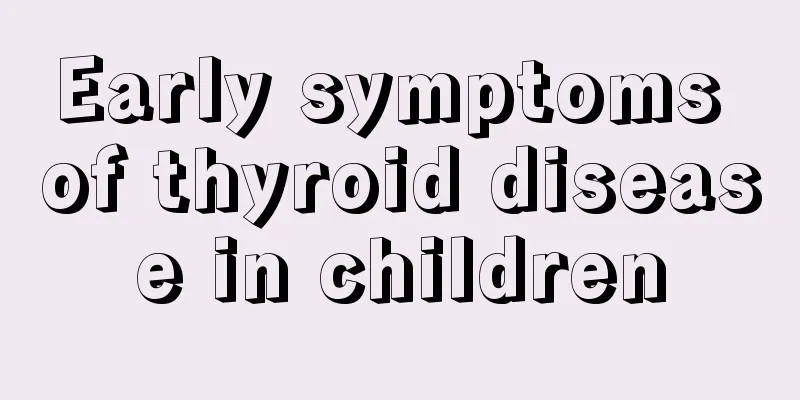What are the red spots on the child's body? What's the matter with the red spots on the child's body?

|
When many red spots suddenly appear on the body and there are no obvious symptoms, you should pay special attention to it. This may be a skin disease, which mainly includes platelet abnormalities and vascular diseases. It also does not rule out the possibility of allergic purpura and eczema and other skin problems. If it happens to children, it will make parents very worried and anxious. Regular check-ups are very important. What's wrong with the child's red spots all over his body? If many small red spots suddenly appear on your body, which are neither painful nor itchy, they are probably small bleeding spots on the skin. The characteristics of the bleeding spots are that the diameter does not exceed 2 mm, they do not protrude above the skin, they do not fade when pressure is applied, and there is no obvious feeling. According to your description, it is not an allergic rash. The characteristics of the rash are that it is higher than the skin, fades when pressed, and has an itchy feeling. So it should be considered as a bleeding point. The appearance of small bleeding spots or ecchymoses on the skin often indicates abnormal changes in hemostasis function. The human body's hemostasis function is completed by blood vessels, platelets and coagulation factors. Any lesion on either side may lead to bleeding. Diseases that cause bleeding spots on the skin include: 1. Vascular diseases: such as vitamin C deficiency (scurvy); Henoch-Schönlein purpura - an allergic inflammation of capillaries, which increases the permeability of the capillary wall, causing not only skin hemorrhages and edema, but also involving other internal organs, causing abdominal pain, joint pain, hematuria, proteinuria, etc. Certain infectious diseases, such as hemorrhagic fever, sepsis, hypoxia and poisoning, can also damage the capillary walls, increasing their permeability, causing blood cells to flow out from the gaps in the walls, and increasing the fragility of the capillaries, making them prone to rupture. All of these conditions can cause bleeding. 2. Platelet abnormalities: Too few platelets and decreased function can also cause bleeding. It is seen in aplastic anemia, acute leukemia, idiopathic thrombocytopenic purpura, secondary thrombocytopenic purpura, etc. 3. Lack of coagulation factors: When coagulation factors are lacking, the blood is not easy to coagulate after the blood vessels in the skin rupture, forming bruises. Since most coagulation factors are synthesized in the liver and require the participation of vitamin K, bleeding is often prone to occur when the liver is diseased or vitamin K is deficient. Other diseases such as chronic nephritis and systemic lupus erythematosus often have some abnormal substances that interfere with the normal coagulation process, so bleeding may also occur. If bleeding spots are found on the skin, it is recommended to promptly perform tests such as platelet count, bleeding time, and coagulation time to confirm the diagnosis. |
<<: Newborn baby's tongue turns white after drinking milk powder
>>: How much should a ten-day-old newborn eat at one time
Recommend
What should we do if children have frequent premature ventricular beats?
Many people don’t know what ventricular premature...
What to do if a 12-year-old girl is too fat
If a 12-year-old girl is too fat, it is often rel...
What is the height and weight of a 25-month-old baby?
Babies are the apple of their parents' eyes. ...
Why does the baby fart but not poop?
Mothers often worry that their babies have not de...
The difference between round and flat pacifiers
A pacifier is a soothing product that babies use ...
How long does it take to get rid of fever after taking the antipyretic injection?
It is actually very common for babies to have a f...
What are some common sense about children's healthy diet?
Children also need to pay special attention to th...
How to breastfeed twins
Every child needs careful care to grow up healthy...
What are the symptoms of adenoid hypertrophy in babies?
Adenoids hypertrophy in infants can manifest in m...
Causes of paroxysmal supraventricular tachycardia in children
Paroxysmal supraventricular tachycardia in childr...
What should you pay attention to in your baby's diet?
The baby's body is very fragile, so the baby ...
At what age do children start to change their teeth?
Children are what parents care about most in our ...
What causes bad breath in 4-year-old children?
When it comes to bad breath, I guess everyone is ...
How to get children to eat more vegetables
Children nowadays generally have a problem of bei...
Water temperature for preparing milk powder for newborn
It is not easy to make milk powder for babies, bu...









